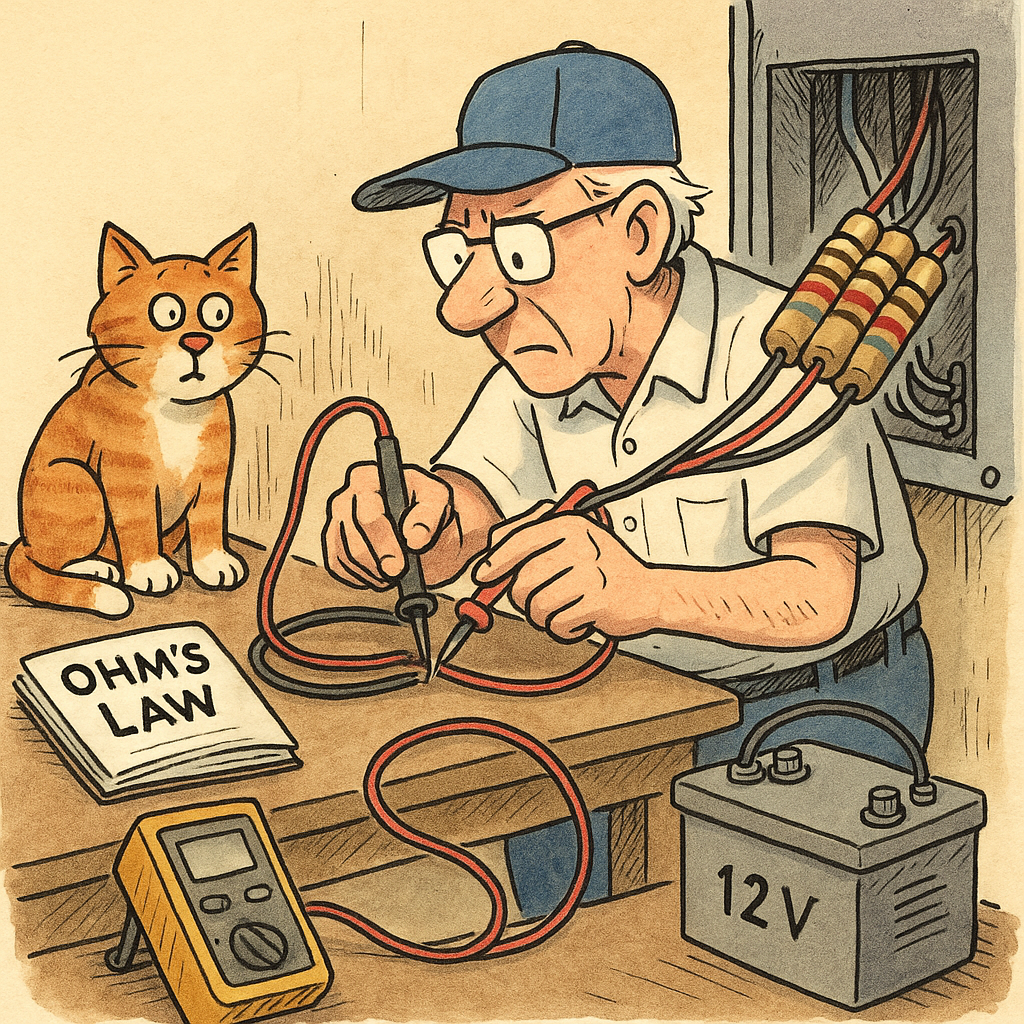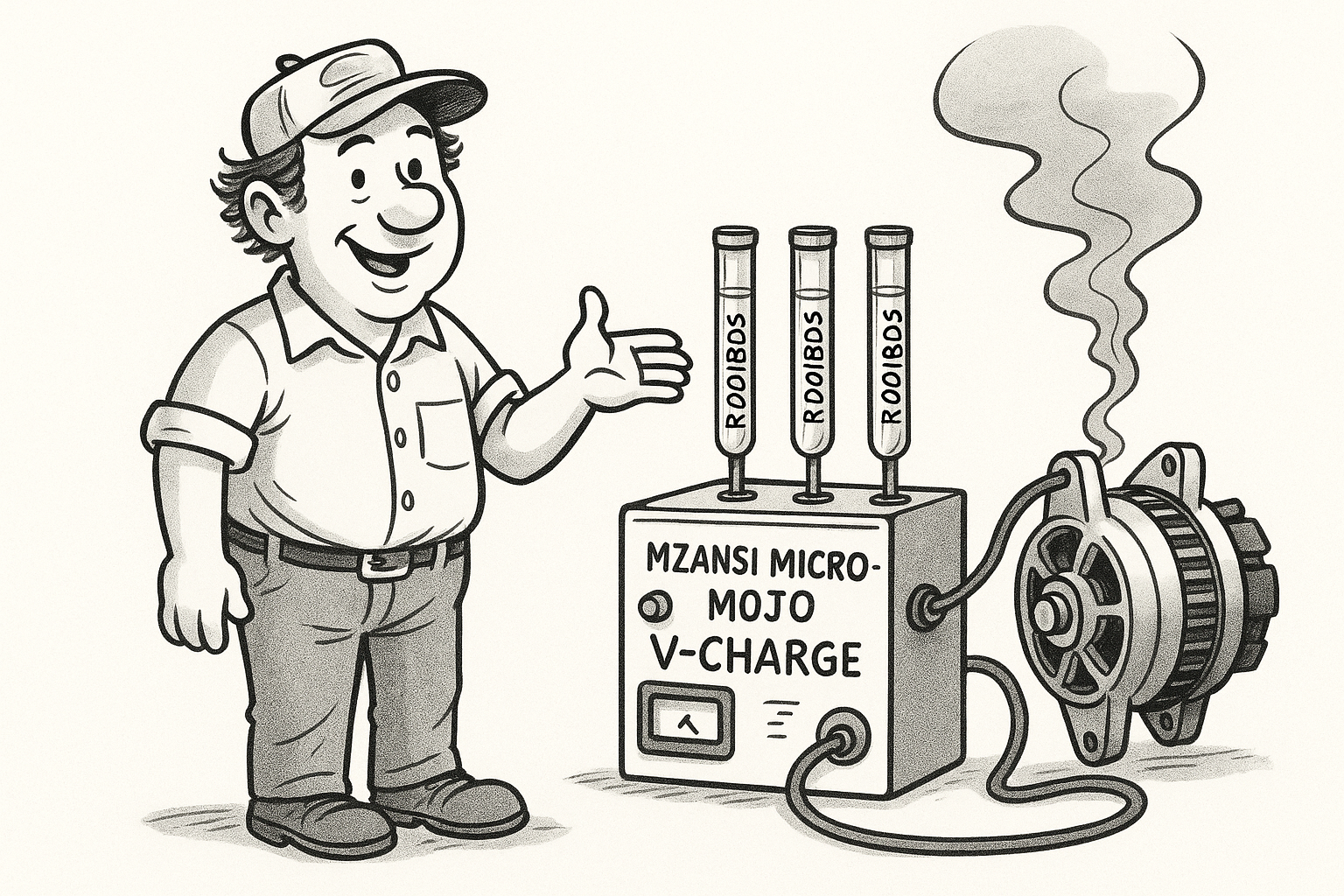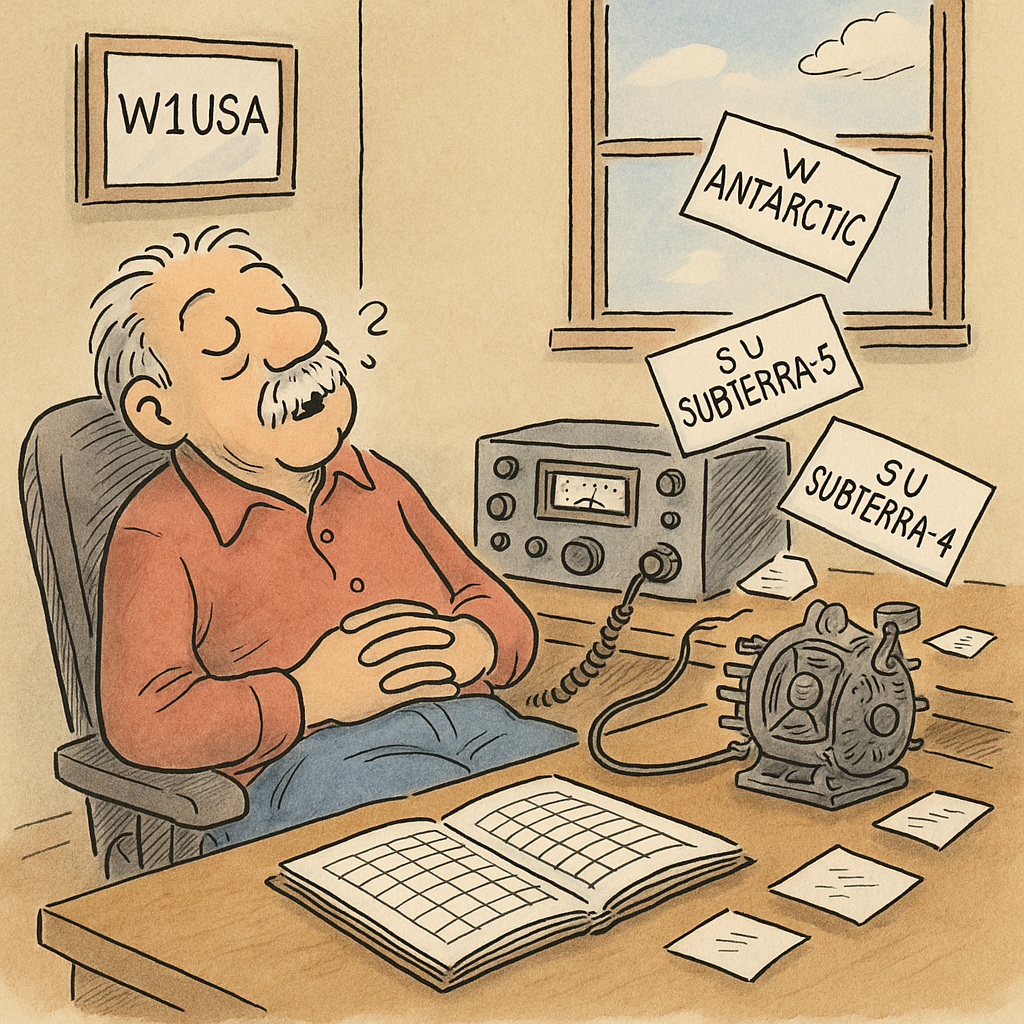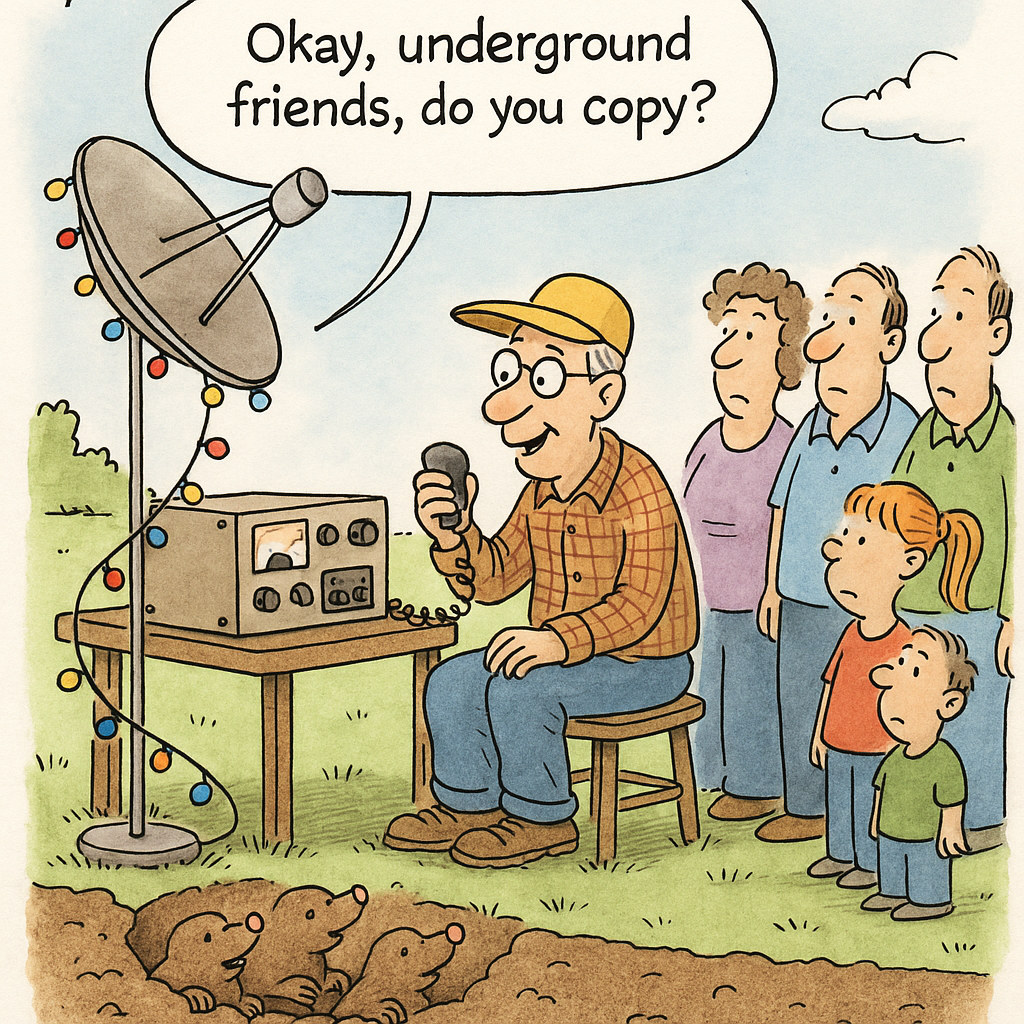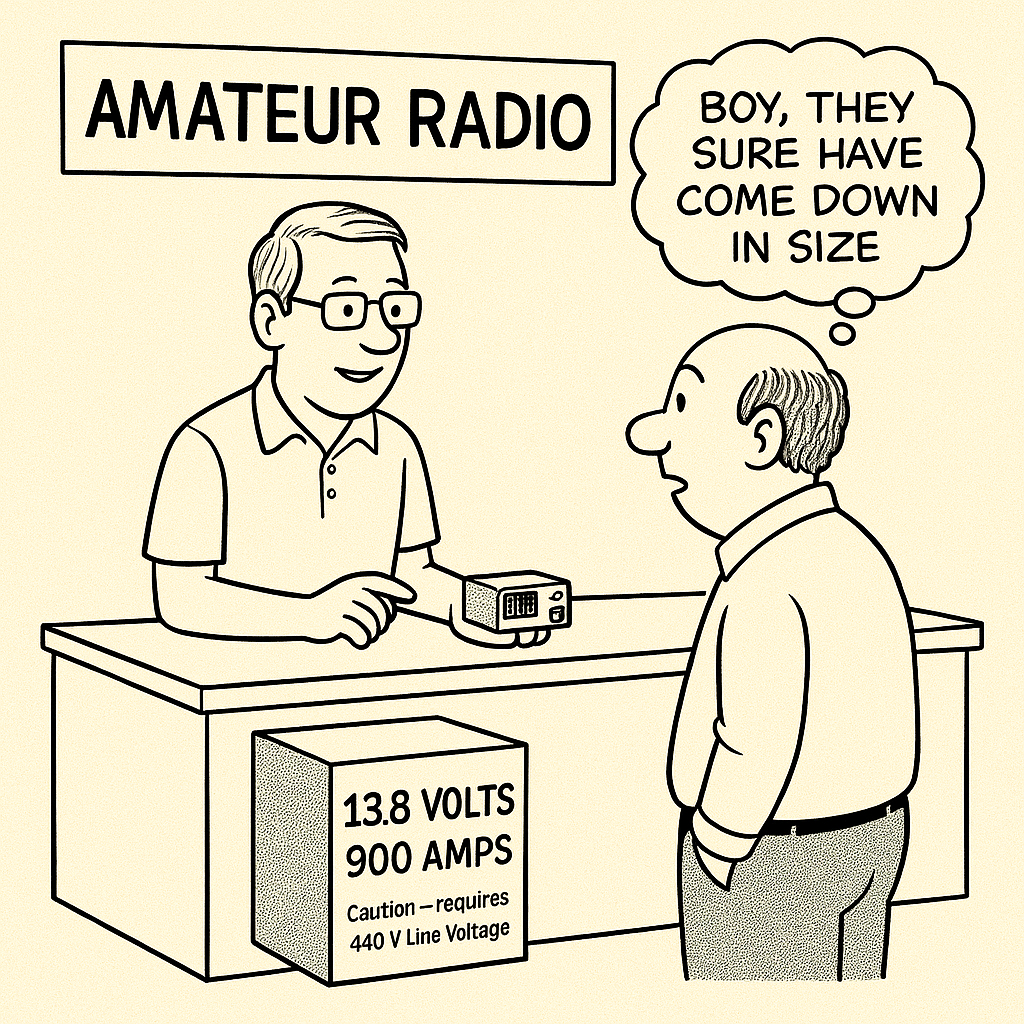“The Great Resistor Rescue”
or, How Ohm’s Law Saved the Town of Buzzkill Junction
Buzzkill Junction was a quiet little town with exactly three things going for it: a world-class donut shop, the largest collection of broken lawnmowers in North America, and an amateur radio club known for arguing over antenna height and grounding techniques.
And then the Great Voltage Surge of ’98 happened.
It started with a squirrel. As these things always do.
The squirrel—later named “Tesla” in memoriam—climbed onto the transformer pole behind the public library, mistook a ceramic insulator for a peanut, and POP! sent 14,000 volts of angry electricity cascading through Buzzkill Junction’s grid.
Streetlights blinked Morse code for “Yikes!”
Hairdryers ignited.
Garage door openers reversed polarity.
The mayor’s pacemaker tried to sync with WWV.
And that’s when Old Man Marty, W4O, sprang into action.
The Setup
Marty was 84 years old and as wiry as a 10-turn coil. He lived in a shack lined with vintage gear and snacks older than some of his grandchildren. On that fateful morning, Marty had been calibrating his toaster using a Tektronix scope and discussing resistor color codes with his cat, “Ohmie.”
When the lights dimmed and the grid began to hum like a nervous opera singer, Marty said one thing:
“This looks like a job for Ohm’s Law.”
The Plan
Knowing the town’s power substation had gone full arc-welder mode, Marty grabbed his emergency go-bag: an ancient Fluke multimeter, four 10-ohm resistors taped together like a dynamite bundle, and a car battery he’d been trickle-charging since 1986.
He loaded it all into his golf cart (license plate: QRMZILLA) and headed toward the substation—dodging flaming extension cords, a confused marching band, and Mrs. Henderson’s treadmill as it sprinted across Main Street under its own power.
The Problem
The surge was feeding back through a defunct electric water tower system (don’t ask), threatening to vaporize the town’s radio repeater—and more importantly, Marty’s rig.
There was no time for circuit diagrams. Marty knew only one thing:
If voltage is the problem, then current must be wrestled into submission.
He flipped open his logbook, scribbled a formula in pencil:
V = IR
Voltage equals current times resistance.
He muttered:
“If I raise R just enough… I can bring I down and drop V like a sack of burnt toast.”
The Execution
Marty wired the resistor bundle directly into the rogue feedback loop, bypassing two squirrels and a box fan. He made a final adjustment using the rubber tip of his cane, grinned like a mad scientist, and yelled:
“FOR SCIENCE, OHMIE!!”
He threw the switch.
The resistors sizzled.
The current groaned.
The streetlamps exhaled in relief.
A toaster exploded in gratitude.
And the entire power surge collapsed like a badly-soldered field day antenna.
The Aftermath
Marty saved the town. The repeater survived. The mayor awarded him a plaque made entirely of ceramic insulators. The cat was indifferent.
Marty simply smiled and said:
“It wasn’t me. It was Ohm’s Law. I just applied it.”
Moral of the Story?
When voltage runs wild and panic sparks like a brushed DC motor…
Don’t scream.
Don’t run.
Don’t let the squirrels win.
Just remember:
Ohm’s Law is not a suggestion. It’s a rescue plan.

